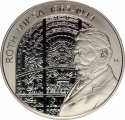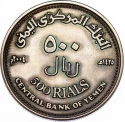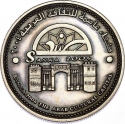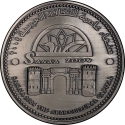You are about to finish your registration. Please check your mailbox (including spam folder). There should be a letter with a confirmation link. Check setting to make sure that your e-mail address is correct.
Send letter againDescription
The Gödöllő Artists' Colony stands out as a significant example of Hungary's art colonies from the turn of the century. Established in 1901 with Aladár Körösfői-Kriesch's move to Gödöllő, its economic backbone was formed by a weaving school initiated in 1904, with technical expertise provided by professionals like Leo Belmonte, Lenke Boér, and Vilma Frey.
The colony gained momentum as Árpád Juhász and István Zichy joined in 1905 and 1906, respectively, and in 1907, the weaving school gained official recognition as a workshop of the School of Applied Arts. Although the colony exhibited as a unified group only in 1909, its members dispersed with the outbreak of war, marking a symbolic end in 1920 with Körösfői-Kriesch's passing.
Characterized as a freely organized creative community, the colony aimed for artistic renewal through radical lifestyle changes, embracing rural life and nature. Their worldview blended socialist ideals, national conservatism, and Christian values, influenced by mystical theosophy and Nietzschean philosophy. Architect István Medgyaszay was associated with the group, and their most notable work includes the Secessionist Cultural Palace in Marosvásárhely, featuring artwork by Gödöllő artists. Their diverse output ranged from monumental architectural decoration to carpet weaving, leatherworks, and children's toys.
Engraver: Gábor Gáti
Obverse

|
Depicts the octagonal stained glass window titled "Nagy Sándor - Miksa Róth: Sisters" within a Secessionist decorative frame, beneath which the inscription "100th Anniversary of the Gödöllő Artist Colony" can be read in horizontal rows. 100 ÉVES A |
|---|---|
Reverse

|
Depicts a Secessionist decorative border. Inside the border, arranged in horizontal rows, there are the country name (Hungarian Republic), denomination, year of issue, and mintmark (BP). The engraver's initials (GG) are visible in the lower right corner beneath the decorative border. MAGYAR |
| Edge |
4000 Forint
Third Republic
100th Anniversary of the Gödöllő Artist Colony
KM# 751 Adamo# EM169
100th Anniversary of the Gödöllő Artist Colony
Characteristics
| Type | Commemorative Issue (Non-circulating) |
| Material | Silver |
| Fineness | 0.925 |
| Weight | 31.46 g |
| Diameter | - |
| Width | 39.6 mm |
| Height | 26.4 mm |
| Thickness | - |
| Shape |
|
| Alignment | - |
| Mint |
Budapest Mint (BP)
|







